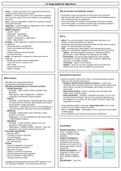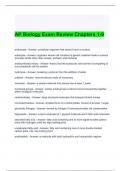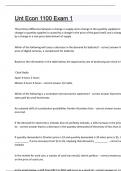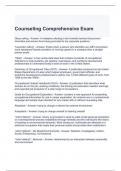1.3 Organisational Objectives
• vision - a written expression of an organisations long-term Why should aims and objectives change?
ambitions that it hopes to accomplish
• mission - a written expression of an organisation’s purpose • businesses change and develop so should aims and objectives
and reason for being. Seen as the means of accomplishing • start up and early years focus on survival (aim) and increasing revenue
the vision. and maintaining cash flow (objective)
• aims - goals an organisation would like to achieve, typically • once survival less of a problem, the business may focus on growth,
broad and optimistic profit maximisation or increasing market share, maintaining quality or
• objectives - concrete targets an organisation set for itself that concerns relating to the environment and ethics
contributes to achieving the aim.
• SMART objectives
• specific - clear
• measurable - quantitative
• achievable - not too difficult Ethics:
• realistic - appropriate to organisation
• timed - time periods • ethics - the moral principles, values and beliefs that govern our
• strategy - a plan, approach or scheme for achieving an aim decision making and behaviour in society
or objective. • businesses may have ethical objectives, these will also have a positive
• decided by senior management impact on brand reputation and image
• involve the medium and long term • CSR - corporate social responsibility, self-imposed ethical policy
• may be risky relating to a corporations obligations to society and the environment.
• a large investment may be required • Labour - minimum standards, protection, working conditions,
• not easily reversed remuneration, rights, Working Time Regulations Act 1998
• tactic - an approach or scheme for achieving an aim or • Environment - go beyond legal requirements, less wastage,
objective. consumption of water, decrease carbon footprint, greenhouse
• decided by middle and line management emissions, sustainable practises
• involve the short to medium term • community - support local charities
• risk is lower • supplier - refuse to work with suppliers who do not treat their
• require fewer resources workers fairly or who do not respect the environment
• easier to change
Setting Ethical objectives:
SWOT Analysis:
• expect business to improve as a result, connections between ethical
objective sand financial performance
• Strengths and weaknesses (internal) • develop a talented and productive workforce - workers feel
• Opportunities and threats (external) motivated which increases productivity, attract the best workers and
• Strengths and Weaknesses of business functions reduce labour turnover, this decreases costs relating to having to
• Human Resources recruit often
• Strengths - highly trained, skilled, educated, loyal, • improving marketing - results in positive brand reputation and
teamwork image, boost customer loyalty
• Weaknesses - poor management, unskilled or • future preparation - changes in regulations are likely to occur soon
unqualified, unmotivated, tension/clashes so being forward-thinking in terms of environmental objectives not
• Finance only prepares for the future but also propels the brand image. Meet
• Strengths - strong finances, adequate capital for running expectations of society
and expanding the business, good relations with banks,
strong growth of sales and profits
• ethical objectives affect a business’ ‘triple bottom line’ which is their
• Weaknesses - inadequate financing, working capital and results in terms of profit, people and planet
cash flow problems, declining revenue and profitability
• there is a ‘shared value’ - advantages to both corporations and society
• Marketing of CSR policies
• Strengths - strong brand, loyal customers, unique
products or services • ethical objectives can however be expensive to implement
• Weaknesses - low brand awareness, little brand loyalty,
undifferentiated products
• Operations
• Strengths - modern facilities, efficient, low cost
production, high quality output Ansoff Matrix:
• Weaknesses - outdated facilities, inefficient, high cost
production, poor quality product sand services Market Penetration - extending
• favourable opportunities hours, changing pricing
• growing market strategy, introduce loyalty
• increasing consumer spending schemes
• new technologies Product development -
• availability of skilled labour additional products that
• low cost financing complement pre-existing
• Threats products or are suited to the
• economic stagnation or recession same target market, requires
• reduced consumer spending investment
• high costs of inputs Market development - new
• existing or potential competitors geographic location, new
• unfavourable government regulations target market, changing
• lack of availability of skilled labour from just B2B to B2B and
• changing consumer tastes B2C
diversification - most risky
• managers should frequently be doing SWOT analysis in line
with changing conditions in the business environment







